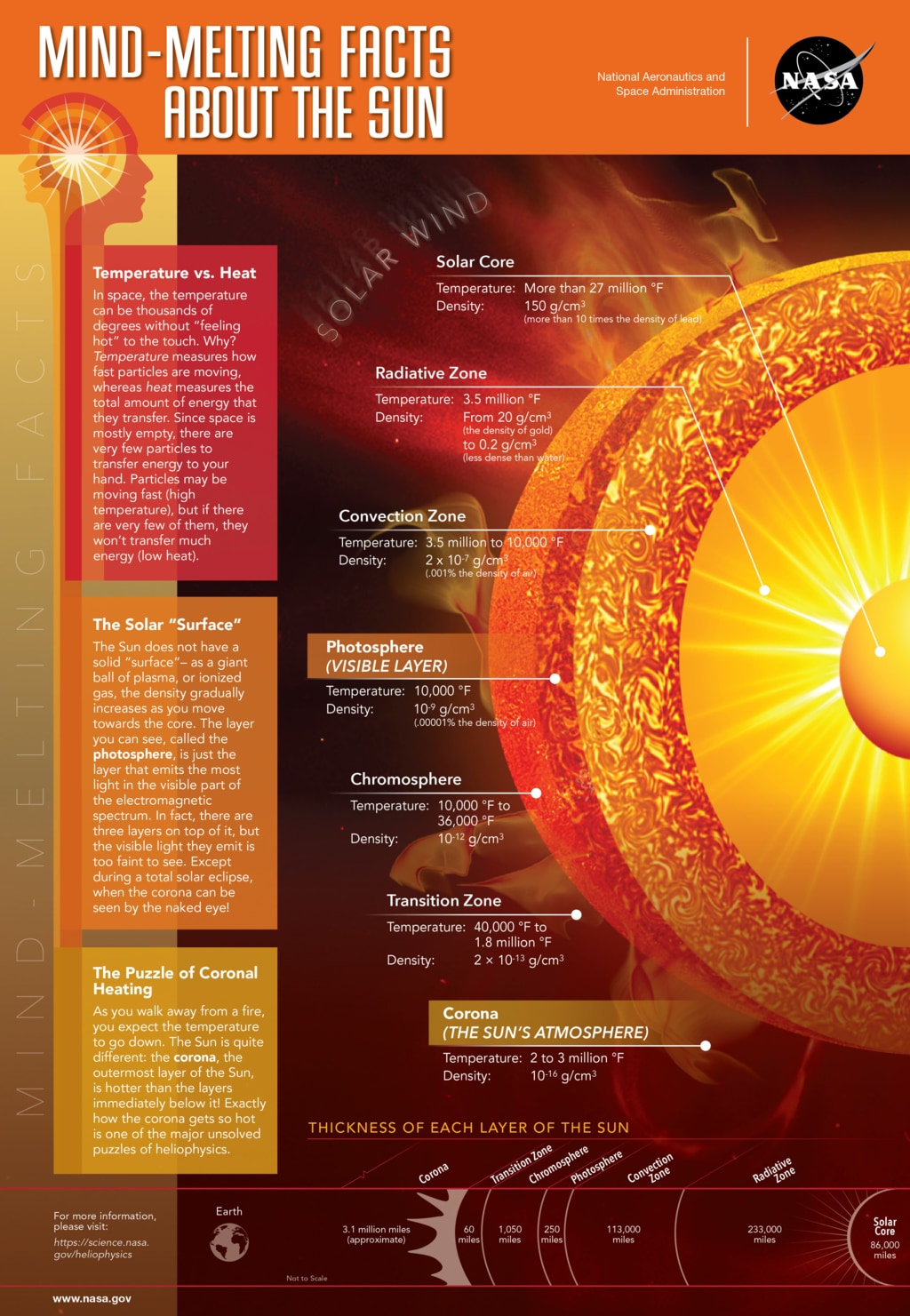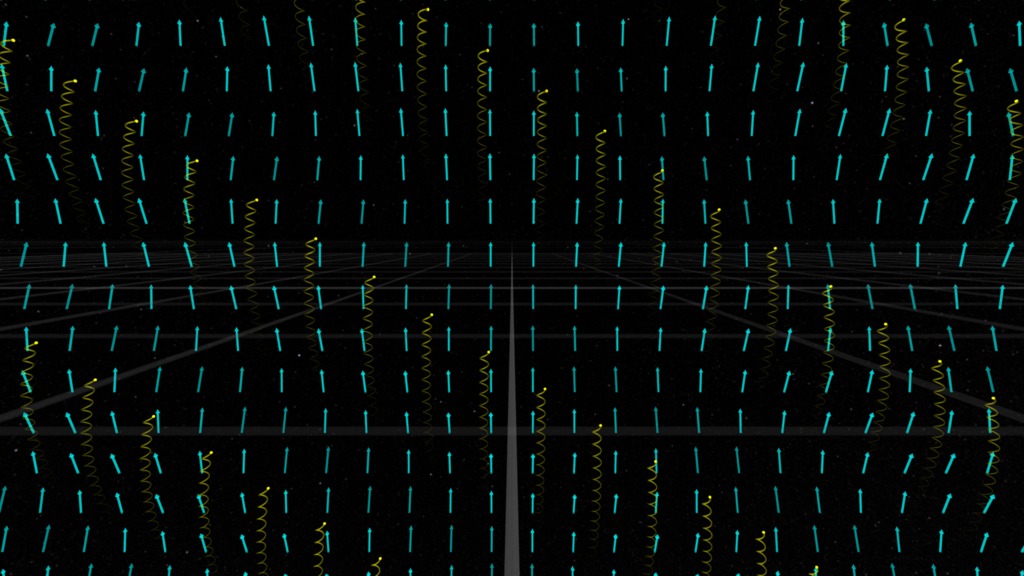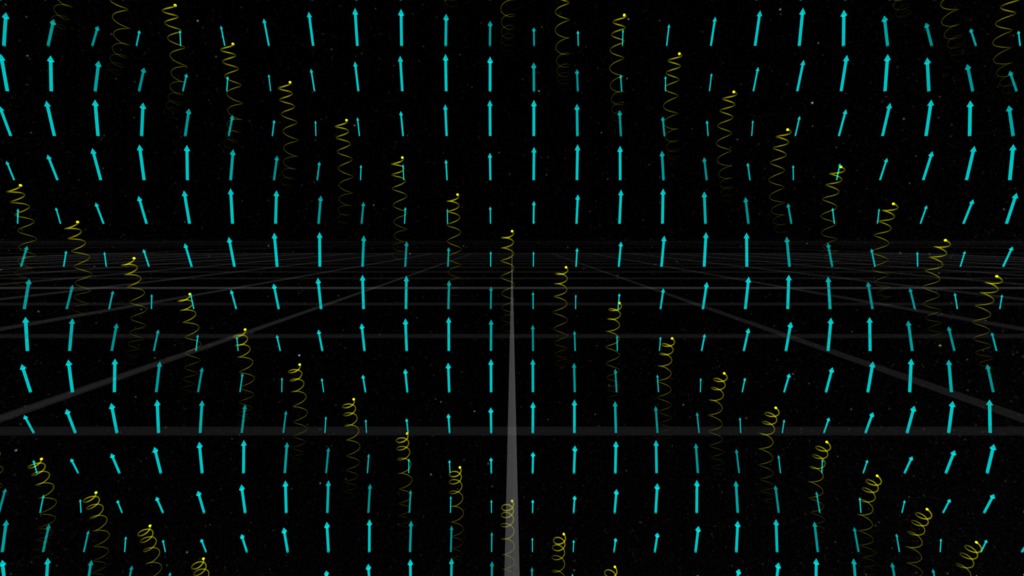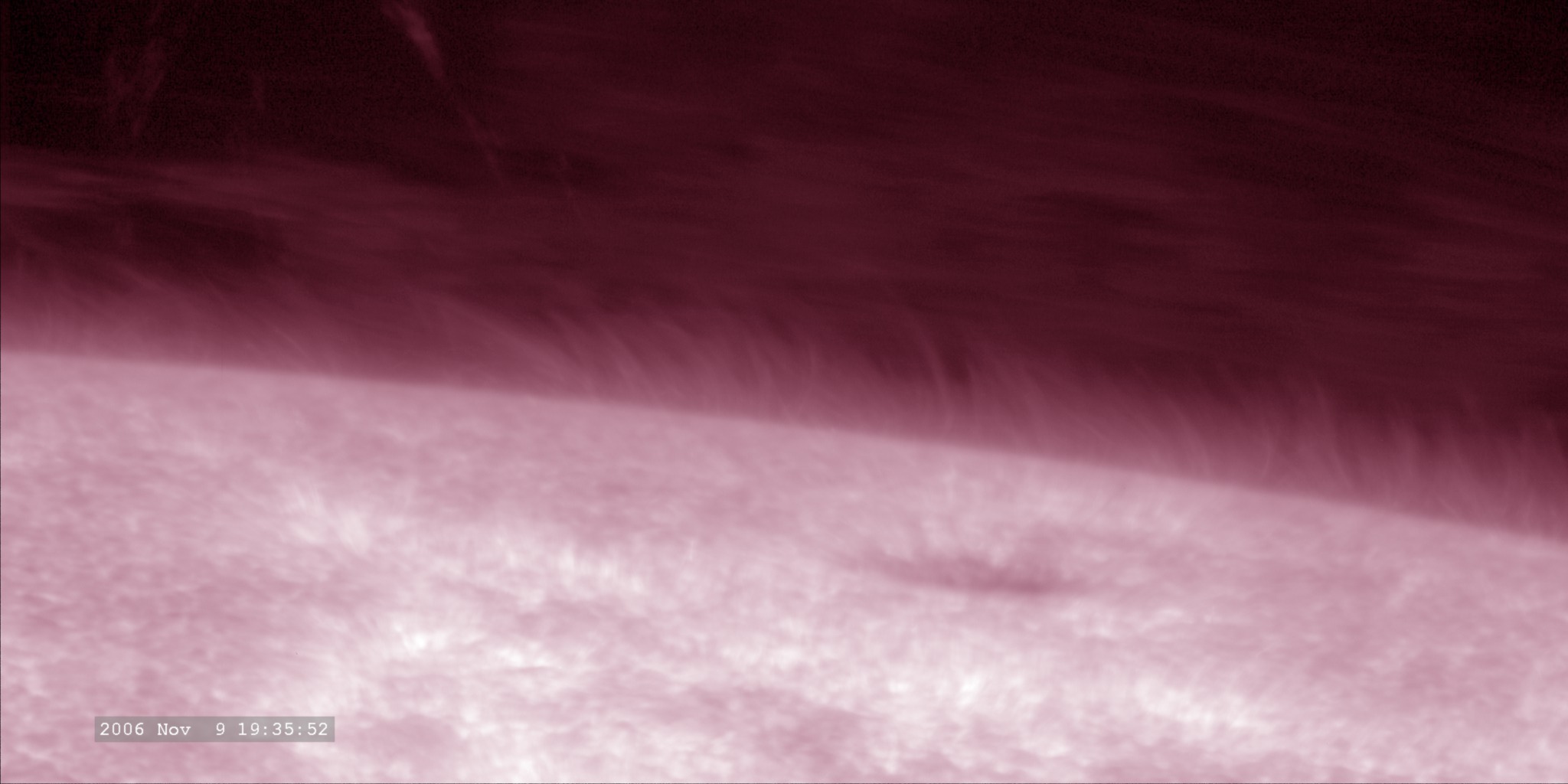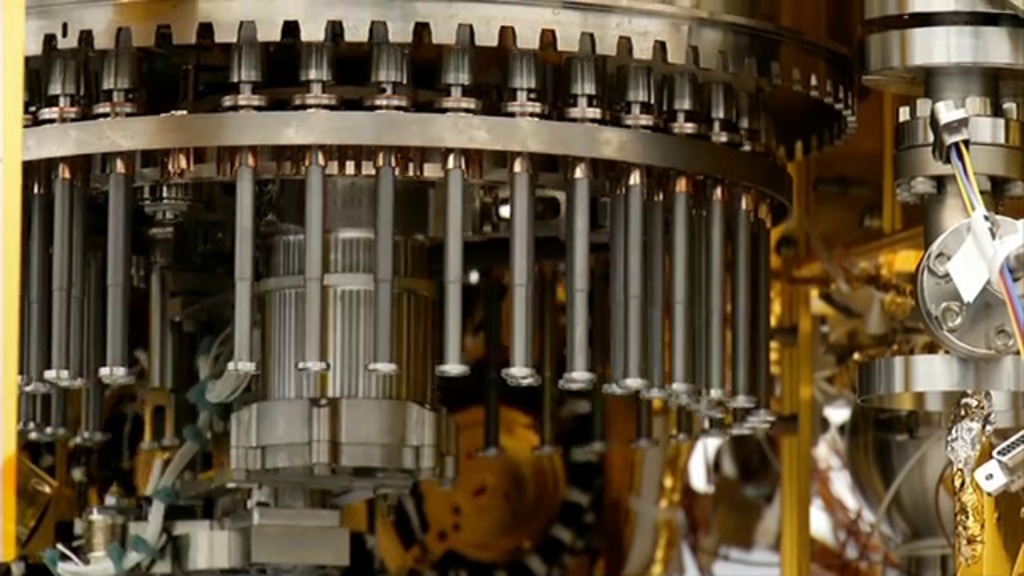Discovering the Sun’s Mysteriously Hot Atmosphere
Something mysterious is going on at the Sun. In defiance of all logic, its atmosphere gets much, much hotter the farther it stretches from the Sun’s blazing surface.
Temperatures in the corona — the tenuous, outermost layer of the solar atmosphere — spike upwards of 2 million degrees Fahrenheit, while just 1,000 miles below, the underlying surface simmers at a balmy 10,000 F. How the Sun manages this feat remains one of the greatest unanswered questions in astrophysics; scientists call it the coronal heating problem. A new, landmark mission, NASA’s Parker Solar Probe — scheduled to launch no earlier than Aug. 11, 2018 — will fly through the corona itself, seeking clues to its behavior and offering the chance for scientists to solve this mystery.
From Earth, as we see it in visible light, the Sun’s appearance — quiet, unchanging — belies the life and drama of our nearest star. Its turbulent surface is rocked by eruptions and intense bursts of radiation, which hurl solar material at incredible speeds to every corner of the solar system. This solar activity can trigger space weather events that have the potential to disrupt radio communications, harm satellites and astronauts, and at their most severe, interfere with power grids.
Above the surface, the corona extends for millions of miles and roils with plasma, gases superheated so much that they separate into an electric flow of ions and free electrons. Eventually, it continues outward as the solar wind, a supersonic stream of plasma permeating the entire solar system. And so, it is that humans live well within the extended atmosphere of our Sun. To fully understand the corona and all its secrets is to understand not only the star that powers life on Earth, but also, the very space around us.
Read more on NASA.gov.
Discovering the Sun’s Mysteriously Hot Atmosphere
Something mysterious is going on at the Sun. In defiance of all logic, its atmosphere gets much, much hotter the farther it stretches from the Sun’s blazing surface.
Temperatures in the corona — the Sun’s outer atmosphere — spike to 3 million degrees Fahrenheit, while just 1,000 miles below, the underlying surface simmers at a balmy 10,000 F. How the Sun manages this feat is a mystery that dates back nearly 150 years, and remains one of the greatest unanswered questions in astrophysics. Scientists call it the coronal heating problem.
Watch the video to learn how astronomers first discovered evidence for this mystery during an eclipse in the 1800s, and what scientists today think could explain it.
Music credits: 'Developing Over Time' by Ben Niblett [PRS], Jon Cotton [PRS], 'Eternal Circle' by Laurent Dury [SACEM], ‘Starlight Andromeda' by Ben Niblett [PRS], Jon Cotton [PRS]
Coronal spectrum image credit: Constantine Emmanouilidi
Complete transcript available.
Watch this video on the NASA Goddard YouTube channel.
The Sun’s Mysteriously Hot Atmosphere
An abridged version about the corona, the Sun's outer atmosphere.
Music credits: 'Developing Over Time' by Ben Niblett [PRS], Jon Cotton [PRS], 'Eternal Circle' by Laurent Dury [SACEM]
Complete transcript available.

GIF
A closeup of the Sun’s convective, or boiling, motion, with a small sunspot forming on the right from Hinode, a collaboration between NASA and the Japan Aerospace Exploration Agency (JAXA). The outer layers of the Sun are constantly boiling and roil with mechanical energy. This fluid motion generates complex magnetic fields that extend far up into the corona.
Credits: NASA/JAXA/Hinode

GIF optimized for Twitter
The corona - the Sun's outer atmosphere - is several hundred times hotter than the Sun's surface. That’s the opposite of what happens with a fire, when it gets cooler the farther away you get.

GIF optimized for Twitter
The Sun's surface is 10,000 degrees Fahrenheit while the corona - the Sun's outer atmosphere - is several hundred times hotter.

GIF optimized for Twitter
The corona extends for millions of miles and continues outward as the solar wind, which bathes Earth and the entire solar system.
Credits
Please give credit for this item to:
NASA's Goddard Space Flight Center
-
Producer
- Joy Ng (USRA)
-
Writer
- Kathalina Tran (SGT)
-
Scientists
- Eric Christian (NASA/HQ)
- Nour Raouafi (Johns Hopkins University/APL)
- James A. Klimchuk (NASA)
- Ryan Milligan (University of Glasgow)
- Sten Odenwald (NASA/GSFC)
- Adrian Daw (NASA/GSFC)
-
Data visualizer
- Tom Bridgman (Global Science and Technology, Inc.)
-
Animators
- Joy Ng (USRA)
- Walt Feimer (KBR Wyle Services, LLC)
- Michael Lentz (USRA)
- Kathalina Tran (SGT)
Release date
This page was originally published on Wednesday, July 25, 2018.
This page was last updated on Wednesday, May 3, 2023 at 1:46 PM EDT.

![Trailer without text introduction. Music credit: Luminous Skies [Underscore] by Andrew Prahlow from www.killertracks.comComplete transcript available.Watch this video on the NASA Goddard YouTube channel.](/vis/a010000/a012900/a012911/1080trailer_updated_animation2_youtube_1080.02350_print.jpg)
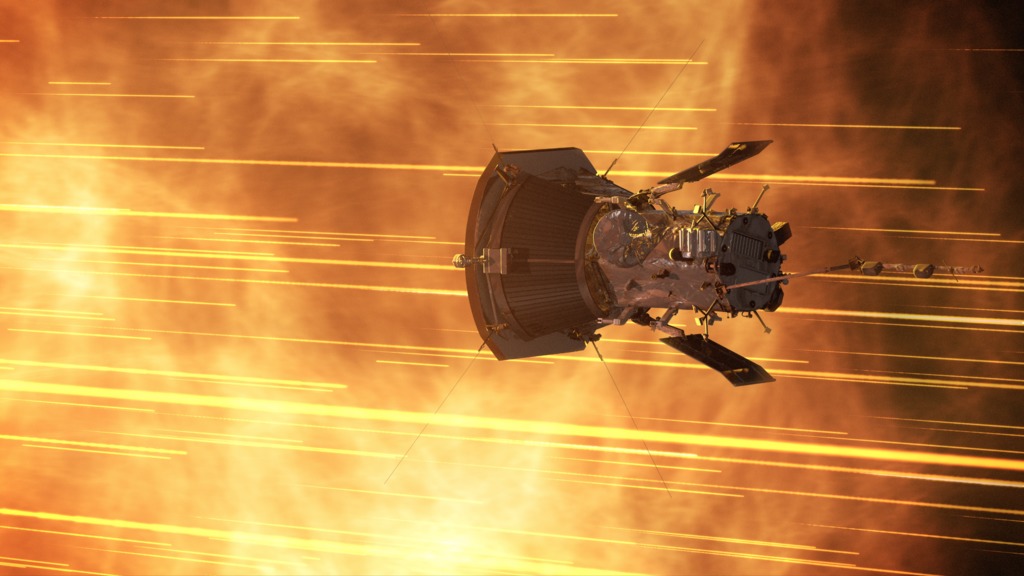
![Music credit: Cheeky Chappy [Main Track] by Jimmy Kaleth, Ross Andrew McLean from www.killertracks.com This music requires a license for use.Watch this video on the NASA Goddard YouTube channel.Complete transcript available.](/vis/a010000/a012800/a012867/meltthumb.jpg)
